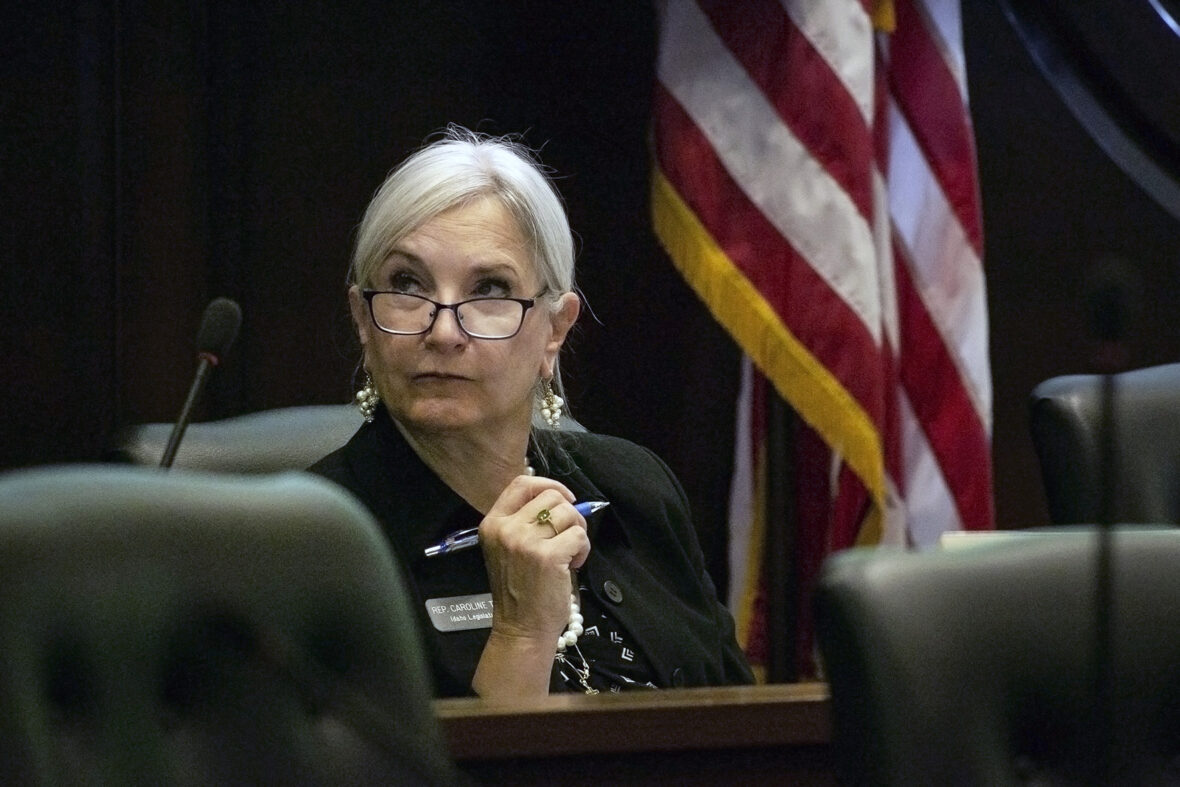
The Legislature’s budget committee had another quiet day Wednesday as members received updates on a pair of Gov. Brad Little’s education programs, and traveled to Nampa to discuss community college cybersecurity programs.
The Joint Finance-Appropriation Committee’s informational meetings drew little debate, and few hints at budget-writers’ priorities heading into 2022. However, Wednesday’s leg of JFAC’s annual fall meetings offered more details on two pots of federal coronavirus relief money Little previously pledged to schools — $10 million to counter widespread substitute teacher shortages and $30 million to better handle high coronavirus caseloads in classrooms.

It’s still unknown how much of the federal money Little allocated for those purposes — sourced from the American Rescue Plan, the third round of congressional coronavirus relief — has been spent by schools. More federal money could be on the way to schools next month, though, and a growing number of districts are flagging interest in help paying for coronavirus mitigation.
What the state does know about schools’ spending
The cash to attract prospective substitute teachers has now been divvied up for school districts based on their 2020 enrollment numbers, state Division of Financial Management head Alex Adams told the committee. Though the program has been presented with a primary goal of alleviating sub shortages, the state has told districts they can spend their share of the $10 million on filling a wide range of jobs, including bonuses for bus drivers, subs and a variety of paraprofessionals who are paid hourly or daily, Adams told EdNews Wednesday.

After reporting high interest from schools, the governor’s office may in November offer another $5 million to districts hardest hit by labor shortages, Adams told EdNews.
“We’ve heard anecdotally from a lot of schools that this gives them mental comfort, that it gives them the ability to ensure they have the staff that they need,” he said.
But it’s too early to tell how much of the money schools are tapping, because the dollars are generally sent to districts retroactively as reimbursements.
Schools also have wide latitude in pulling from another batch of federal funds, the $30 million dedicated to districts’ coronavirus responses. This money can be spent on testing, personal protective equipment, contact tracing and other purposes. On Wednesday, JFAC members heard a similar update to one reporters received at an Idaho Department of Health and Welfare briefing Tuesday: 54 schools and districts have expressed interest in the coronavirus mitigation funding, and 21 are in route to accessing nearly $5 million.
That’s up from the $3.6 million requested by 13 districts about a month ago. At the time, 46 schools and districts had signaled interest.
Unlike the money for employee bonuses, districts have to apply and work out subgrants with IDHW to access the coronavirus aid. So far, the money they’ve requested amounts to less than one-sixth of the funding available.
So where is the money requested so far? Districts that have inked contracts didn’t receive all the funding they requested at once. As with the substitute teacher money, districts can draw down the dollars from the state as they spend them, deputy state epidemiologist Kathryn Turner said at the briefing Tuesday.
Despite unknowns about schools’ spending, it is known that Idaho has only carved out 4% of the ARP money under its control, lagging behind the 41% of state-held funds that have been distributed nationally, Adams said.
That leaves the Legislature and JFAC with a long list of budgeting decisions to make in 2022, a list lengthened by a record-setting surplus that filled Idaho’s coffers this year.
Lawmakers get a cybersecurity update — and a pitch
Community colleges have used their share of a state cybersecurity budget to launch training centers for their students.
And community college presidents say they’d like to do more — and collaborate with industry on their cybersecurity needs.
JFAC’s scene shifted Wednesday, as budget-writers left the Statehouse for the College of Western Idaho’s Nampa campus, for a quick tour, and a lunch with the heads of the state’s four two-year colleges.
In all, the community colleges received about $234,000 from Idaho’s $950,000 cybersecurity initiative. The 2020 Legislature approved Gov. Brad Little’s proposal — in hopes of creating collaborative programs to train students in the growing cybersecurity field.
Like the four-year schools, the community colleges used much of their money to create training hubs, known as strategic operation centers, or SOCs.
College of Eastern Idaho President Rick Aman made a pitch for a second SOC. He says his college could use one center to train its degree-seeking students, and a second to meet the training needs of its industry partners.
Finding space for classes and labs is a challenge — especially at CWI, which opened in 2008, and has been one of the nation’s fastest growing community colleges ever since.
Lawmakers gathered Wednesday in CWI’s Micron Education Center, an old Sam’s Club, which has been converted into classrooms and space for career-technical programs.
An expanded cybersecurity program could fit at CWI’s 10-acre Boise site on the fringe of Downtown, executive vice president of operations Craig Brown told lawmakers. CWI hopes to partner with private industry on the Boise project, leveraging the site’s prime location near the Boise River Greenbelt.
CWI has run a bond issue and a plant facilities levy proposal for projects on the Nampa campus. Both failed. And it’s unlikely CWI will go back to voters a third time, Brown said. CWI hopes to get funding from the state Permanent Building Fund for at least one of the projects, a health sciences building.
